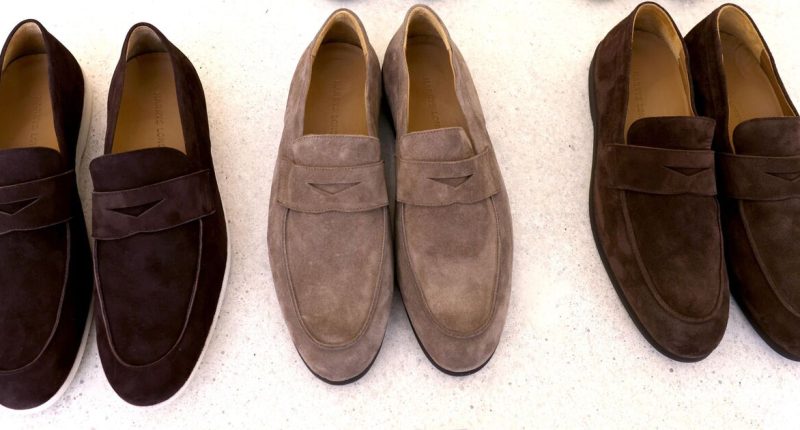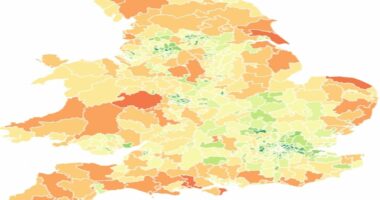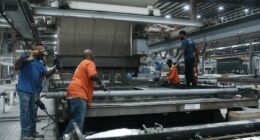Share this @internewscast.com
Foot pain is blighting the lives of tens of thousands of Brits, say experts. And about half of all problems are down to footwear, explains consultant podiatric surgeon Ron McCulloch.
Ill-fitting, badly designed and, frankly, impractical shoes, are causing myriad problems. Heel pain in particular is reaching an “epidemic” level, says Mr McCulloch, director of the London Podiatry Centre, with plantar fasciitis the most common cause of pain in his patients. The other hotspot is the second toe joint, which bears the brunt of the body’s weight if the foot is unbalanced and the big toe becomes unstable.
Foot pain, it emerges, has been on the rise after Covid. Many of us got out of the habit of wearing shoes or walking far as we went out less. Going without shoes might feel nice but, long-term, a lack of arch and foot support can be damaging, Tendinitis, overcompensating for pain or discomfort, can also occur when we don’t wear shoes. Or, indeed, the right ones.
The fashion for sliders, flip-flops and sandals has left us more vulnerable to toe and ankle injuries too. Mr McCulloch has now collaborated with a leading footwear firm to design the most comfortable loafers out there. They say that, before you judge a man, you should “walk a mile in his shoes”, so I agreed to do just that to test the slip-ons and see if they could ease my own aching feet.
As a busy parent who commutes three or four days a week, I find myself getting painful feet and ankles as much as the next person. The average UK male takes between 5,000 and 10,000 steps per day, exerting 80-120% of their body weight with each step. This equals 350,000-1,000,000kg being exerted on the body every day, a common cause of bone, joint and muscle-related injuries. But it’s never struck me my shoes might be, in part at least, to blame.
High-end brand Harrys London claims its Harley loafer line, designed using state-of-the-art research, is the most comfortable on the planet. Harley was inspired by Harrys’ Downing loafer. A bestseller with celeb fans of the brand including Jason Isaacs, Sam Claflin, Donald Glover, Adam Scott and Sam Fender.
Handmade in Italy, the Harley fits as well as any lace-up. But at £550 a pair, they will leave your wallet groaning. It’s certainly stylish and looks good. And it’s durable, with a name that’s not just a piece of branding – in fact it’s a homage to the medical minds on London’s Harley Street who have given it their stamp of approval.
In fact, a few bouncy strides on to Bond Street where – from the ankle down at least – I felt as stylish as the city’s flashiest plutocrats. The science backs up my firsthand – or firstfoot? – impression. Extensive testing concluded the slip-on, a type of shoe in disfavour with specialists, lowered the pressure applied on the injury-prone second toe joint, as well as the heel area, while walking and standing by up to 400%.
Mr McCulloch explains: “Forefoot pressures went down from about 400 kilopascals in a standard all-leather loafer to about 100 in the Harley. Heel pressures went down from 800 to 200 kilopascals.” He concluded “the shoe could be valuable for people who suffer from foot or heel pain and are likely to develop either as a consequence of their foot structures”. He added: “The key thing about is it offers more shock absorption and stability compared to other shoes on the market.”
Harrys London enlisted musculoskeletal practitioners the Marylebone Health Group to help develop this new approach. MHG studied how the sinusoidal motion of human walking – the cyclical movement encompassing posture, rhythm, balance and speed – interacts with foot pressure points. Researchers focused on optimising shock absorption, weight distribution and foot stability. It is the first time that sports science has been applied to the production of a formal shoe.
The resulting Harley loafer succeeds in taking pressure away from the high-load heel and second-toe areas, redistributing it to reduce stress. Harrys also applied further changes to its Technogel insole, which behaves like a liquid but has the shape memory of a solid and gives pressure relief.
Other elements added include foam gel for cushioning, a layer of air for breathability and responsiveness, and featherweight carbon strips at the heel and ball of the foot for stability. Combining with the pillowy footbed is a Vibram sole made from a foam rubber compound. And how do they feel? Like walking on cushions.















